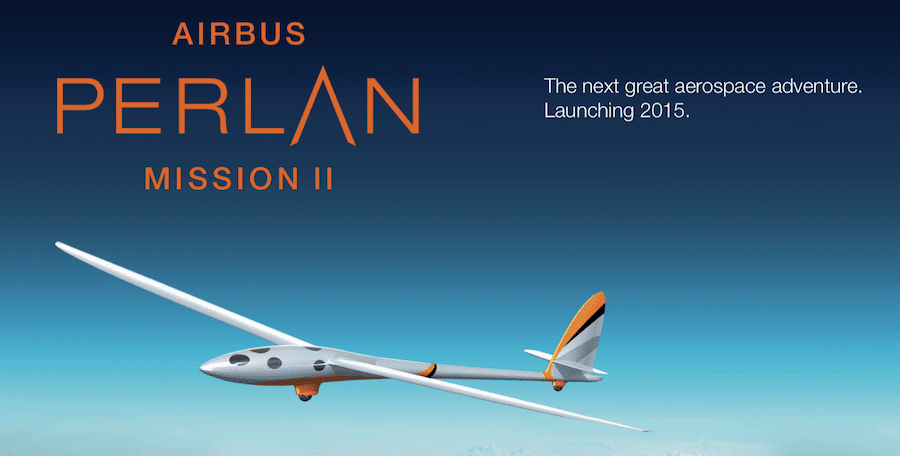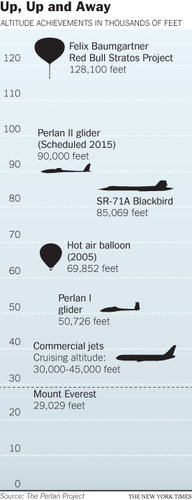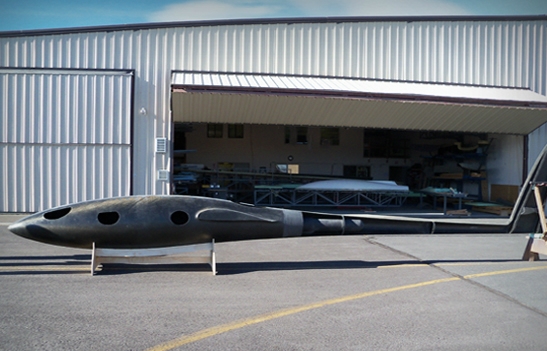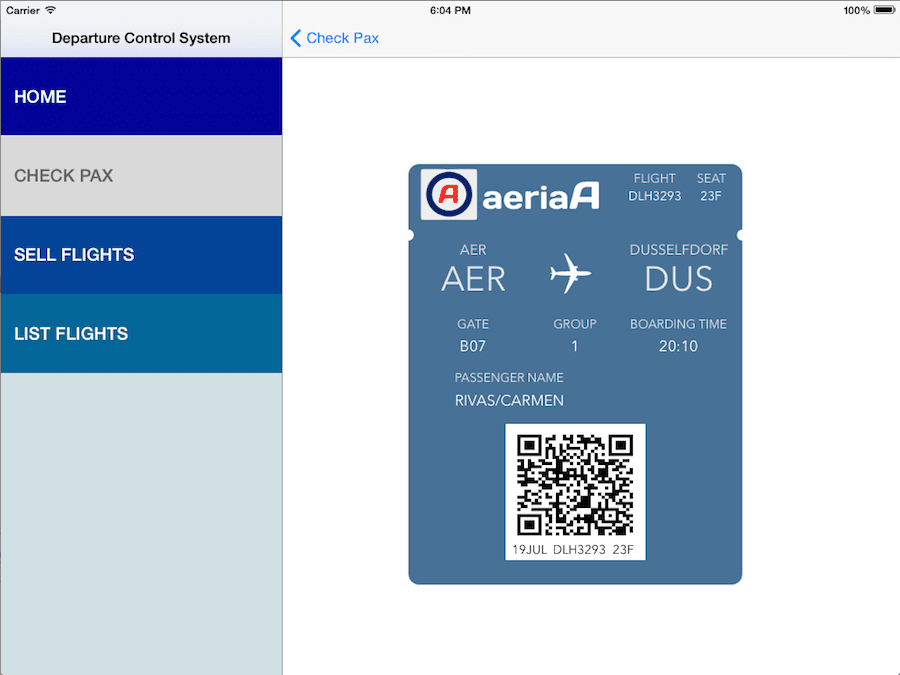Aviation had always a mandatory adventure component. Since its inception, before Flyer took off in 1903, adventure, challenge and epic has been associated to the magic of flying. The riskiest first years of flying, Blériot, Fokker, Amelia Earhart, Charles Lindbergh, the two World Wars, spanish Plus-Ultra, the golden commercial age, the Constellation, the X-planes, Kelly Johnson, Tupolev, Mikoyan Gurevich, McDonnel Douglas, the 747, the Concorde, A380, TWA-PanAm, Stealth planes, Airbus/Boeing, SkunkWorks, SR-71, etc. are history forever. But in the 21st century flying is just another mean of transport, new programmes as 787 or A350, F35, military contracts, A400 and manufacturers trying to get some Airbus/Boeing market share. Do we still have any adventure to see? I hope so, this is what the Airbus Perlan Mission II is trying to achieve, new challenges with the basic way of flying, soaring with a glider. A plane trying to get higher than any other manned aircraft has ever flown and without engines, just wind. Do you remember Red Bull Stratos Jump and Felix Baumgartner or the recent jump of Google VP Alan Eustace? Like them, this is another epic project.
We had the privilege of making an interview to two members of this project. Soar with us and start this amazing adventure!
Morgan Sandercock is Pilot and Project Manager in the Airbus Perlan Mission II and Stéphane Fymat is Board member of Perlan Project Inc.
Morgan Sandercock is a glider pilot from Australia. Morgan is the Chief Flying Instructor at the Hunter Valley Gliding Club. Morgan works as a project manager for a coal mining company in Australia.
“When I first heard about the Perlan Project, I was very interested,” he said, “When I heard that Einar was looking for pilots to contribute to the project, I knew I had to be involved.”
He is also the Founder & CEO of Smartplane Inc. an aircraft avionics software startup.
PROJECT’S INTRODUCTION
[aeriaA] Tell us, what it is the AIRBUS PERLAN MISSION II
This the story. From 1992-98, Perlan’s founder and NASA test pilot Einar Enevoldson collected evidence on a weather phenomenon that no one at the time even knew existed: stratospheric mountain waves. Like huge ocean waves, these waves of air are kicked off by strong winds blowing over the tops of high mountain ranges like the Andes. These waves of air then shoot straight up towards space. As a pilot, Einar quickly figured out that you can use a glider to ride those waves all the way up to near space. And he set out to prove it. This became The Perlan Project.
In 1998 meteorologist Dr. Elizabeth Austin teamed up with Einar and expanded upon his findings proving that it is the stratospheric polar night jet and the polar vortex that are factors in sustaining these mountain waves allowing them to reach up to 130,000 feet (39,624 metres).
In 1999 Steve Fossett, the record-setting aviator, sailor, adventurer and first person to fly solo non-stop around the world in a balloon, decided to fund Perlan Mission I and became one of its pilots.
On August 30, 2006 Steve Fossett and Einar Enevoldson smashed the existing altitude record for gliders by soaring up to 50,671 feet (15,460m) in a standard glider using these stratospheric waves of air.
And they could have gone even higher! The problem was that their pressure suits expanded so much inside the cabin that they couldn’t move the flight controls and safely control the aircraft anymore. So they came down, and quickly decided they needed a custom glider with a pressurized cabin … Perlan Mission II was born.
Sometime in 2015/16 the Airbus Perlan Mission II intends to set new altitude records by flying a purpose-built pressurized high-altitude glider (the Perlan 2) higher than any other manned wing borne aircraft has ever flown in sustained flight using stratospheric mountain waves and the polar vortex and in so doing harvest invaluable data about earth’s atmosphere and its ozone layer.
[aeriaA] What do you want to achieve?
Set a new wing-borne altitude record breaking all previous records. Collect data of Earth’s atmosphere (polar vortices, ozone layer) that can be used for understanding climate patterns and possible climate changes. Conduct aerodynamic and aeronautical research that can lead to innovative aeronautical developments and understanding flight on Mars. Use the mission as a platform to launch educational programs.
[aeriaA] What is the current project’s status? What is your roadmap? When do you schedule to start the flights?
The project is hard at work right now because we have only 8 months left to finish construction of the glider. The first flights should occur in Redmond, Oregon around July 2015. Then we will move to Minden, Nevada for altitude testing in the Sierra wave. The peak season in Argentina is August-September, so we will be ready with the glider shipped to Argentina for 2016.
WORKTEAM
[aeriaA] How is the work team structured?
The core team are all volunteers. We have a variety of people from different backgrounds, mostly glider pilots, who are working on different aspects of the project. The actual construction of the glider is being done by a commercial company. They specialise in assembling kit aircraft and bring a lot of knowledge of aviation techniques to the project.
[aeriaA] Do you have volunteer people involved in technical areas?
Yes, some of our volunteers are ex-NASA employees and they are working on subsystems like the pressurization and rebreather.
[aeriaA] One of the big losses in the aviation’s adventure and experimentation was the death of Steve Fosset, a principal sponsor of this Project. Tell us how was he? What were the dreams and feelings about this project?
I (Morgan) never met Steve. I got involved in Perlan after he disappeared. He was the perfect guy for this project – committed to the dream and supremely skilled at assembling a team to carry out the work.
THE FLIGHT
[aeriaA] From the pilot’s point of view, how is the pilot’s preparation and their project’s contribution? Where are they practising? What are the key pilot’s skills for this kind of flight? How are the differences in flying in each different atmosphere layer? (Troposphere, Tropopause and Stratosphere)
The pilots are practicing in Argentina as well in wave conditions at other locations around the globe. Most of the work in this kind of flying is in the preparation: the actual flying is easy but getting the right equipment to the launch point at the right time takes a lot of knowledge and persistence.
We have two different flight simulators which are able to simulate the performance of the glider at high altitude. The difference in handling between low altitude and high altitude is quite significant. At low altitude, the glider rolls very slowly but at high altitude rolling is very fast. The high altitude condition has very low damping – the glider doesn’t really know which end faces forwards – so the pilots have more work to do simply to fly straight. Airliner pilots know this because they will never turn off the autopilot at altitude unless there is an emergency. The autopilot flies the aircraft much more accurately, which is what is needed at high speed and high altitude.
[aeriaA] Where do you plan the tow plane releases the glider?
The glider will release the tow plane at relatively low altitude – under 10,000ft. The particular geography in El Calafate means that we have a relatively long distance between the airport and the release point. About 60km. This is an extremely long distance to tow for normal glider flying but necessary for our mission.
[aeriaA] What are the ideal meteorological conditions for high altitude mountain wave soaring? Tell us about the meteorological resources the project has.
The project meteorologist is Elizabeth Austin. She has been involved in the project from almost the very beginning. She is one of our long-time volunteers.
The meteorological feature which makes this all possible is the Polar Vortex. We need to have that extraordinarily high and strong jet stream overhead our flight path to make this possible. We also need the lower-level winds to cooperate for us. There will be many days that the Polar Vortex is there but there is no rising air beneath it that would allow us to climb up. Basically we will be looking for wind blowing strongly on the mountain tops and then continuously increasing wind speed all the way up to 100,000ft or more. We also need clear conditions on the ground with no rain or fog.

The manifold geometry of the Antarctic Polar vortex (as revealed in A. de La Cámara, A. M. Mancho, K. Ide, E. Serrano, R. Mechoso. Journal of Atmospheric Sciences. 2012.) Source: www.icmat.es/a.m.mancho
[aeriaA] What wavelengths and temperatures do you need for the soaring through the different layers of the atmosphere?
The wavelength of the wave is controlled by the wind speed and the stability of the air. When a parcel of air is displaced upwards by blowing over the mountain, stable air will try to return to the level that it came from. This is what drives the wave oscillation. Unstable air would try to keep rising, which is not what we want but it is useful to have an unstable layer underneath the stable air. The unstable layer underneath will not resist the waves pushing at it from the top. A parcel of unstable air pushed down will try to keep going down.
This requirement for stability means the temperature profile in the atmosphere should be constant temperature or increasing temperature with altitude. This is exactly what we have in the tropopause and stratosphere, so we expect that the wave conditions, once they reach the stratosphere, will always be very good.

Variation of Temperature with Altitude in Earth’s Atmosphere. Source Chemical Reactions in the Atmosphere. CC License
[aeriaA] For the beginners, you are going to soar with the mountain’s wave technique, tell us how it works and why Argentinian Andes/Patagonia Mountains are perfect for this challenge, what are the mountain’s characteristics?
The important characteristics for mountain wave are strong wind, stable air and a mountain ridge across the wind. Phase 1 of the Perlan Project flew for many years in New Zealand, where the main mountain range is approximately 45 degrees to the main wind. The project was not successful at reaching high altitude in New Zealand. When we moved to Argentina, we found a mountain range that was 90 degrees to the wind and we found that the Polar Vortex tends to blow over Argentina more often.

Thermaling into wave. Source: FAA Glider Flying Handbook. http://www.aeriaa.com/books/glider-flying-handbook/
Most mountain ranges do produce wave lift when they get the right winds. But the stability of the air is also important. This is best achieved by having a large ocean upstream of the mountain range. The Alps in Europe and the Himalayas in Asia don’t have a nearby ocean, so they don’t make waves as often or as strong as the Andes in South America.
In Argentina, there is one location known as the Cordillera del Viento which makes the strongest wave. We have seen climb rates of thousands of feet per minute for 20,000ft in this location. Many world record speeds have been achieved there. But this is a long way north of where the Polar Vortex blows, so we don’t expect to use that location for the Perlan Project.
[aeriaA] What is the mean rate climb do you expect during the soaring?
The average climb rate for the Perlan Mission is expected to be 3 knots, or about 300 feet per minute. We expect to spend a lot of time climbing at 5 to 10 knots but we will also spend a lot of time searching for the best part of the wave.
ENGINEERING
[aeriaA] What are the challenges you faced in the wing’s geometry design? What were the wing’s design requirements for each particular atmosphere’s layer? Tell us about the airfoil’s design. How is the Lift/Drag and Glide ratios did you achieve with this design? What is the glider’s weight and max payload? How is going the carbon engineering experience?
The main challenge in the wing design is finding a good balance between performance at low altitude and at high altitude. The change in conditions between low altitude and high altitude is much larger than most other aircraft. This is why our original goal of 100,000ft has been reduced to 90,000ft for this glider. While we could design a wing that would fly well at 100,000ft, we don’t think that wing will perform well enough at low altitude to enable us to get up to 100,000ft. The 90,000ft wing is going to perform well enough low down that we can spend a lot of time searching for the wave without losing a lot of altitude.
The L/D ratio is about 33:1. This is not good for a large glider. Other gliders this size can achieve 60:1. The important concern for us is the sink rate. This wing has a low sink rate throughout the entire altitude range.

Glider aspect ratio. Source: FAA Glider Flying Handbook. http://www.aeriaa.com/books/glider-flying-handbook/
Maximum weight is 1800 lbs. This is limited by the tow plane. We don’t want to tow a glider that is significantly heavier than normal competition gliders. Payload is 2 pilots and about 10LBS of science instruments.
The magic material which makes this all possible is the pre-preg carbon fibre. This is impregnated with the epoxy resin during the manufacture of the cloth. Normal carbon fibre production requires an excess of epoxy to ensure that every fibre is completely encased in epoxy. The carbon fibres are stronger than steel. The epoxy is stronger than butter. If we can reduce the amount of epoxy then we can put more fibres in for the same weight and we end up with a part that is either stronger or lighter than the conventional carbon fibre part.
[aeriaA] About the cockpit, it is pressurized tell us about its design and set-up. How the different atmosphere pressures affect the cabin/cockpit? About windows, my 4-year-old nephew says they are too small! Where are you going to put the yaw string?
The yaw string is the most important instrument on the glider. All of the instruments on the panel in front of me can fail and I can still fly comfortably. If the yaw string falls off, then I’m not comfortable. The hatches above the two pilots are transparent windows and they will both have yaw strings on them.
The small windows are a simple design decision. The polycarbonate material is much weaker than carbon fibre so we need a very thick and heavy window for the same strength as the rest of the skin. Polycarbonate also shrinks a lot with the cold temperatures so large windows will shrink more and put more stress on the carbon skin.
The complex design decision is “Where do you put the windows?” We have done a lot of work to come up with the window layout. The visual task for the glider pilot is much greater than any other aircraft except a fighter jet. We need to be able to look almost every direction at some point in the flight. This is why gliders (and fighters) always have a bubble canopy with no sun-shade. For the Perlan, the mission is a little simpler than a competition glider. We will only be facing one direction, with the sun on one side. The window layout chosen does give adequate visibility, even for the back seat pilot, in every phase of flight.
The cabin is pressurized to 8.5psi, which is about the same as commercial airliners. So we aren’t trying to make it special or unique. What is different is our source of air: we will only have one tank of air to supply pressure. This means we cannot tolerate any leaks in the cabin. We have tested the hatches and proved that we can build it with an almost undetectable leak rate.
[aeriaA] About instrumentation, you have also scientific mission objectives, what kind of instruments are you planning to have on-board?
The science we can do at altitude is mostly related to atmospheric research. We can take samples and measurements that no other aircraft can do. We don’t yet have the science instruments finalized. We are looking for university partners, PhD students, who will tell us what instruments they want.
The basic organization of the wind at altitude is important for science and for the pilots. The primary science instruments are also the flight instruments. The data we record to validate our altitude record will also be useful to researchers who wish to understand the wind. We will effectively be recording science data with every single flight. We will publish the flights via the Online Contest website, so this science data will be available for anyone in the world to download within 48 hours of the flight.
[aeriaA] About the speed’s performance, what are the maximum and stall speeds certified?
The stall speed is predicted to be 33 knots indicated airspeed. This does not change much with altitude. However at the peak altitude, this is equal to 200 knots true airspeed. Our maximum speed at altitude is Mach 0.65, equal to 380 knots true. So we have a relatively large margin between stall speed and Vne.
SUPPORT AND HELP
[aeriaA] Are you opened for voluntary technical assistance?
We are currently looking for volunteers in the area of telemetry and data display on a website. We would like to have a website where the schoolchildren can follow a flight in real time and see the position and altitude of the glider on a map.
[aeriaA] I would like to thank to Morgan Sandercock, Stéphane Fymat and the effort of Gary Thoulouis
You can also follow us on Twitter @aeriaablog, Facebook and LinkedIn
For more info:














